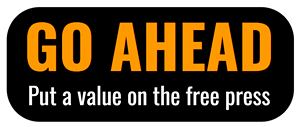
Amid this haze, I noticed more whining, tears, complaining and general lack of cooperation from my kiddos. Frustrated and worn thin, I tried to problem-solve: We talked about alternatives to these behaviors, and I gave lectures in the car on the way to school. As you can imagine, nothing changed.
I knew it was time to take a look at myself when I yelled at my 6-year-old, “I’ve asked you to brush your teeth seven times, and if you don’t stop smelling all the ChapStick and do what I asked, I’m going to throw them all away.”
She yelled right back in my face, “I HATE you.”
Thankfully, I was intelligent enough not to respond, but her words were the catalyst I needed to make some changes in my own behavior and responses to my kiddos. For the rest of the day, I ruminated on our descent into whining and angry interactions and noticed I was feeling apathetic and disconnected from my children. I wanted to punish them by taking away their screen time, toys and playdates until they could “shape up” and be respectful. At one point I joked to my husband about sending them off to boot camp where they would learn to be appreciative of all the privilege they had and come back ready to cooperate with simple teeth-brushing routines.
Thankfully, at some point, I began to hear the faint whisper of my wise mama self over the frustration and guilt spiraling in my head. She said, “All this behavior is normal when you feel disconnected.” I immediately felt better for two reasons. First, she was absolutely right. When I paused to notice, I could feel the distance between our family caused by all the illness, stress, rushing and not really taking the time to see my kiddos. And second, this was all completely normal. When we feel disconnected, both adults and kids do and say unkind or uncooperative things as a cry for help and an attempt to be seen.
Knowing this was a connection issue, not my own personal failing as a mom, allowed me to get curious and open to the fun and creative ways I could increase connection and rediscover the sweetness I was used to having with my family.
What is this whole connection thing, really? While connection is described as a link or relationship between two people, ideas or things, I like to quote professor and author Brené Brown in my Mindful Parenting program: “I define connection as the energy that exists between people when they feel seen, heard and valued; when they can give and receive without judgment; and when they derive sustenance and strength from the relationship.”
This connection business is powerful stuff because it creates a stronger bond and feeling of safety that makes everything else easier. I remind the parents I work with that even when it feels challenging and time-consuming, meaningful connection as a way of problem-solving is much easier than policing your child and punishing every mistake and unhelpful reaction. Connection feels a lot better, too.
Do the work
It’s helpful to acknowledge that creating deep, mindful connection habits takes work, focus and awareness throughout your day-to-day grind. I used to think some people were just born into a life of calm and ease and deep eye-gazing, and other people (like me) were born running around like chickens with their heads cut off and never really seeing anything other than the next check box on the never-ending to-do list. What I’ve discovered is that connecting meaningfully is learned; it’s a muscle you build and it’s never too late to start.
Step by step, I was able to apply strategies to my relationships with myself, partner, friends, kids and clients that cultivated connection and deepened the fun we had. While everyone’s journey looks different, I’ve broken down some basics to give you a road map to powerful connection that will help you solve many underlying problems.
Pause
Slowing down is key, and also hard to do if you’re not in the habit. I had to get ridiculously deliberate about making space for connection, but now the practices that felt difficult and disjointed are comfortable, and I feel irritation and resistance when I don’t stick to them.
It might look like:
Setting a calendar alert or a timer several times a day to just check in with your breath or to put your hand on your chest to see if you can feel your heartbeat.
Making a sign to put up in rooms where you usually feel rushed and frustrated (for me it’s the kitchen and by the front door) that says “Stop. Breathe. Connect.”
Putting your phone on the charger for a few hours each day so you can connect with certain tasks and people without distractions.
Notice
Check in with what you are thinking and feeling when the timer goes off or you see that sign. Are you frantic and weighed down by the dozens of tasks on your list? Exhausted by the endless work of keeping up appearances?
It might look like:
“I’m overwhelmed by all that I have to do today.”
“I feel hungry or thirsty or need to move my body right now.”
“I’m feeling really lonely, yet I’m surrounded by people.”
“I’m holding my breath, rushing from one thing to the next, as if that will help me go faster.”
Connect
Consciously connect to what you want to be thinking and feeling in this moment. You don’t have to change what you’re doing:Keep chopping veggies or mopping the floor and look for kinder, easier and more joyful thoughts to connect to in that moment.
It might look like:
Shifting from hate-cleaning to connection-cleaning: Turn on some tunes, take a deep breath and remember that cleaning is a form of self-care.
Playfully ushering loud obnoxious children outside to play a game while you breathe easy and enjoy making dinner in peace and quiet.
Giving your grumpy child (or partner for that matter) a mindful hug. Bonus points if you do it without saying a word; just smile and look them in the eye.
Start the bedtime routine early once a week so you are not rushed and can take extra time to snuggle, read, share a gratitude practice and put away the day together. It doesn’t matter how old your child is; finding a way to connect through touch and conversation helps you both to feel cared for and seen.
The night after the ChapStick incident, I snuggled with my daughters and asked about actions they wanted to take to feel better connected. When they requested more physical affection, I recounted the hugs, kisses, reading snuggles and I love yous we share every day, but they said they didn’t remember those. This is an interesting phenomenon when we feel disconnection: We create walls to protect us, and those barriers make it difficult to feel the love that’s there for us to receive.
My 9-year-old and I made a plan to give 10 mindful hugs a day, during which we take a deep breath as we wrap our arms around each other with intention. I vowed to go back to using when/then statements instead of threats, and we all woke up the next day feeling relieved and reconnected. When I notice a disruption in the force, I quickly come back to our hug count for the day so we can hug it out mindfully, then go back to the task at hand.
A connection-based problem-solving strategy doesn’t just provide a Band-Aid for the tantrum or challenge at hand; it helps meet underlying needs and prevent problems in the future. Additionally, it requires less energy than lecturing and punishing the unwanted behaviors that stem from disconnection. It’s also more playful — a feel-good way of reducing stress that’s helpful for both kids and adults.
Petterson lives in Moscow with her husband and their two children. She left public education to become a yoga instructor, sleep specialist and mindful parenting educator. A few of her favorite things are teaching yoga, travel, hugs, reading and potlucks. She loves hearing from the community and helping parents; you can reach her via her website at kristinepetterson.com.




















